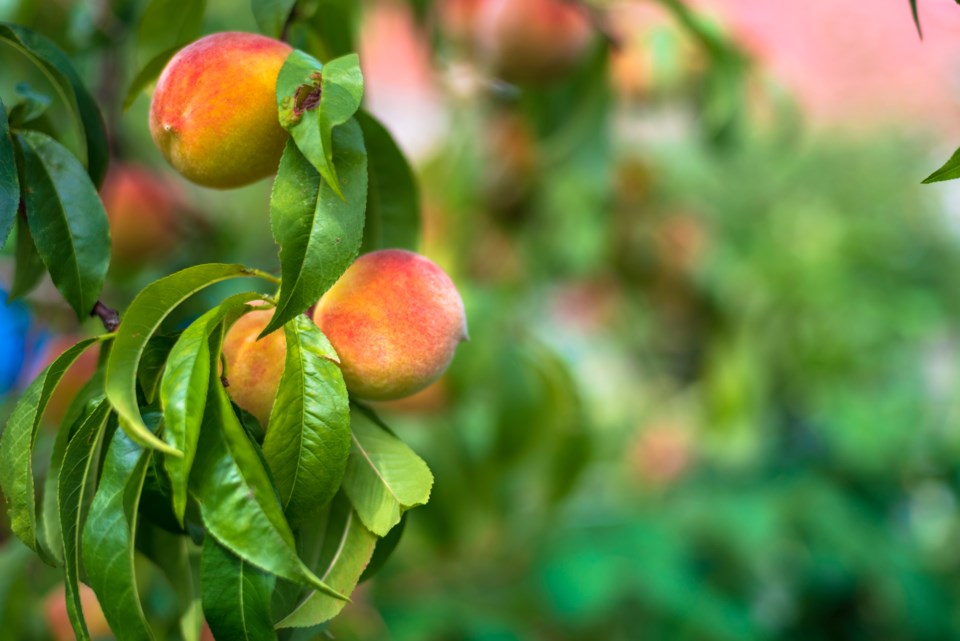Editor’s note: This story was originally published by The Denver Post and was shared via AP StoryShare.
At roughly this time last year, the state was seeking federal disaster support after a 19-degree April freeze on the Western Slope decimated Colorado's peach crop.
A National Weather Service forecast calling for up to seven inches of snow and low temperatures in the teens across northeast and north-central Colorado overnight Monday into Tuesday has stirred up some bad memories.
But farmers and experts say there is no reason for concern about a repeat of the disastrous 2020 season. At least not unless things take a drastic and unexpected turn out west.
"The good news is that there is no news," Tom Lipetzky, director of the Colorado Department of Agriculture's markets division, said Monday when asked if another cold spring in the Rocky Mountains was having an impact on crop projections again.
Big spring snows in the Denver area do not mean Colorado's peach heavens on the Western Slope are dealing with the same conditions.
The National Weather Service forecast for Palisade -- hometown of the state's beloved Palisade peaches -- called for isolated rain showers followed by a clear but windy night with a low around 32 degrees. Chilly but not to a peach blossom-ruining degree, according to researchers.
"It got a little bit cold there last week," Lipetzky said of conditions on the Western Slope. "At least from what I have been hearing and reading it wasn’t cold enough to cause damage, just keep people up at night."
Talbott Farms in Palisade is a multi-generation family operation that lost 85% of its crop last year, orchard manager Bruce Talbott said. The farm grows about 400 acres of peaches. So far, 2021 is a different story.
"We have had no damage yet because of this spring," Talbott said.
He's predicting a 2021 crop of 80 to 90% of normal with any reduction coming from an early freeze in October that damaged some trees. Spring storms can be devastating -- like last year's -- but the later in the season it gets the bigger the storm has to be to cause damage. By May 1, farms in Mesa County are pretty much in the clear, Talbott said.
"If you want to worry, you can worry all the time in this business. At the moment, we're still pretty optimistic that we have a good year coming up," he said. "It's extremely important because we have to rebuild markets, rebuild our labor programs."
At Colorado State University's Orchard Mesa Research Station outside Grand Junction -- an 80-acre facility that is home to an orchard with 4,000 fruit trees -- an alarm was set to go off Monday night if temperatures fell below 30 degrees, said Ioannis Minas, a researcher and associate professor of pomology with CSU.
If the temperature falls below that threshold -- and it's not too windy out --the team at the station will run wind machines, Minas said. The industry standard machines circulate colder ground-level air and mix it with warmer air higher in the atmosphere, bringing temperatures around the trees up just enough to save the crop.
Peach trees on the Western Slope are in full bloom, said Minas. According to research on cold hardiness, which he shares on his website through the school, it would take temperatures of 28 degrees to kill off 10% of peach blossoms. If the temperature falls to 25 degrees, that could kill off up to 90% of blossoms.
Trees generally need to be between 8% and 15% of their blossoms to turn into fruit for a good crop, according to Minas.
"Spring is a critical time," Minas said. "A damaging freeze in the fall can cause problems but when it comes to springtime, every loss of a flower cost a lot of money."
The calculus on cold hardiness changes on the Front Range, where spring is colder and trees bloom later. For trees in that part of the state, it would take a 23-degree freeze to kill 10% of flowers and a freeze in the range of 9 to 15 degrees to kill 90%, Minas said.
Minas noted that the eastern side of the state isn't a major fruit producer like the Western Slope, but there are small acreage grows.
Sharon Perdue owns and operates Ya Ya Farm and Orchard, a 1,000-tree operation near Longmont. Her you-pick-it apple orchard is coming off a miserable 2020. People still came out last fall to enjoy the setting amid the pandemic, Perdue said, but there was no fruit to pick or sell.
"We lost everything," she said. "Usually, when they have a freeze (on the Western Slope) we have fruit over here and vice versa. Last year it was everybody."
Purdue was pulling for snow on Monday night. The flowers haven't opened yet on her apple trees and a coating of snow would insulate them on Monday and potentially even Tuesday night when temperatures in Longmont are supposed to bottom out in the low 20s.
"This time of year is about exactly what's happening right now. It happens every year it seems," Perdue said. "It’s going to be what it is. Maybe the low won't be as low as they're saying. That would be nice."


.jpg;w=120;h=80;mode=crop)
